Results
-
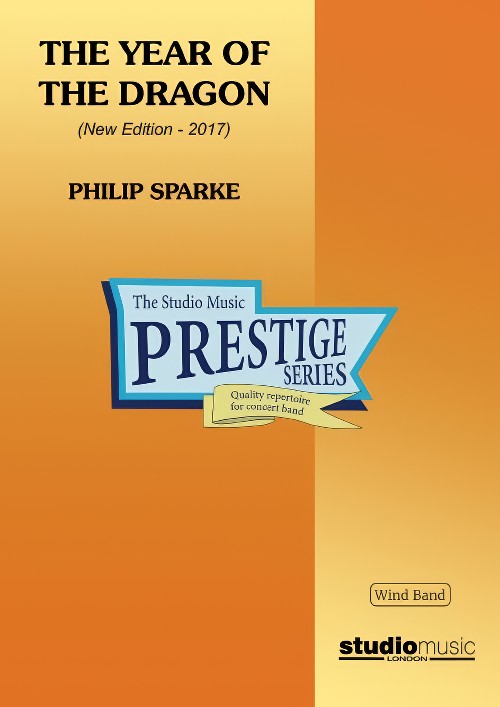 £37.95
£37.95The Year of the Dragon (Prestige Concert Band - Score only) - Sparke, Philip
The 2017 version of The Year of the Dragon was commissioned by the Siena Wind Orchestra and given its world premiere on June 17th 2017 in Bunkyo Civic Hall, Tokyo, conducted by the composer.The original wind band arrangement of The Year of the Dragon was made in 1985, a year after the composer wrote the brass band version. At that time he was still learning the intricacies of writing for wind band (and still is!) and in the 32 years which have elapsed since then, his approach to scoring for the medium has developed and, hopefully, improved.Here are the main differences between the two versions:In the 1980's, the wind band movement was much less international than it is now. British wind bands were still to some extent based on the military band tradition of the time, which tended to use rather smaller instrumentation than the then-dominant American university model. The new version embraces a much more international instrumentation, including low woodwinds and string bass, as well as an expanded percussion section.In the original version there was a touch of naivety in the way the composer wrote for the woodwinds; much of their articulation was transferred too literally from the brass version, resulting in some unidiomatic writing, which he has tried to improve in the new version.In addition to the above, Philip's own compositional style has matured and developed in the intervening 32 years. There are some passages in the original which he simply would not write today - not because they are 'wrong', but because his way of writing has changed. The new version is perhaps how he would have written it today, rather than simply dressing the original version in new clothes.The work is in three movements:Toccata opens with an arresting side drum figure and snatches of themes from various sections of the band, which try to develop until a broad and powerful theme from the middle of the band asserts itself. A central dance-like section soon gives way to the return of this theme, which subsides until faint echoes of the opening material fade to a close.Interlude takes the form of a sad and languid solo for alto saxophone. A chorale for the whole band introduces a brief spell of optimism but the saxophone solo returns to close the movement quietly.Finale is a real tour-de-force for the band with a stream of rapid semi-quavers running throughout the movement. The main theme is heroic and march-like but this is interspersed with lighter, more playful episodes. A distant fanfare to the sound of bells is introduced and this eventually returns to bring the work to a stirring close.
Estimated dispatch 7-14 working days
-
 £199.95
£199.95The Year of the Dragon (Prestige Concert Band - Score and Parts) - Sparke, Philip
The 2017 version of The Year of the Dragon was commissioned by the Siena Wind Orchestra and given its world premiere on June 17th 2017 in Bunkyo Civic Hall, Tokyo, conducted by the composer.The original wind band arrangement of The Year of the Dragon was made in 1985, a year after the composer wrote the brass band version. At that time he was still learning the intricacies of writing for wind band (and still is!) and in the 32 years which have elapsed since then, his approach to scoring for the medium has developed and, hopefully, improved.Here are the main differences between the two versions:In the 1980's, the wind band movement was much less international than it is now. British wind bands were still to some extent based on the military band tradition of the time, which tended to use rather smaller instrumentation than the then-dominant American university model. The new version embraces a much more international instrumentation, including low woodwinds and string bass, as well as an expanded percussion section.In the original version there was a touch of naivety in the way the composer wrote for the woodwinds; much of their articulation was transferred too literally from the brass version, resulting in some unidiomatic writing, which he has tried to improve in the new version.In addition to the above, Philip's own compositional style has matured and developed in the intervening 32 years. There are some passages in the original which he simply would not write today - not because they are 'wrong', but because his way of writing has changed. The new version is perhaps how he would have written it today, rather than simply dressing the original version in new clothes.The work is in three movements:Toccata opens with an arresting side drum figure and snatches of themes from various sections of the band, which try to develop until a broad and powerful theme from the middle of the band asserts itself. A central dance-like section soon gives way to the return of this theme, which subsides until faint echoes of the opening material fade to a close.Interlude takes the form of a sad and languid solo for alto saxophone. A chorale for the whole band introduces a brief spell of optimism but the saxophone solo returns to close the movement quietly.Finale is a real tour-de-force for the band with a stream of rapid semi-quavers running throughout the movement. The main theme is heroic and march-like but this is interspersed with lighter, more playful episodes. A distant fanfare to the sound of bells is introduced and this eventually returns to bring the work to a stirring close.
Estimated dispatch 7-14 working days
-
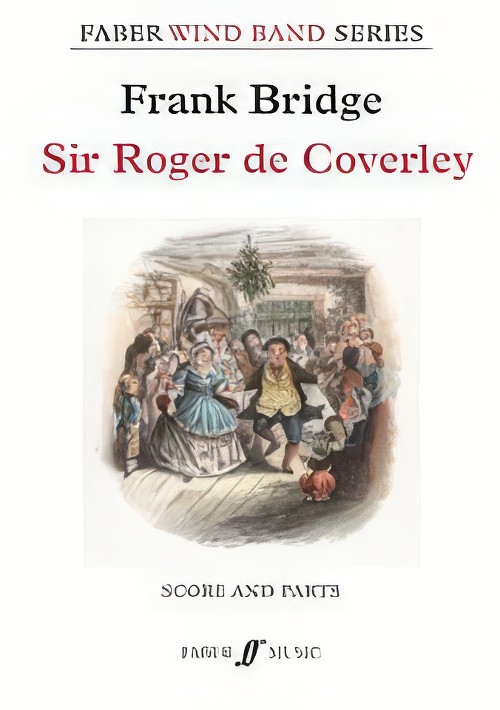 £79.99
£79.99Sir Roger de Coverley (Concert Band - Score and Parts) - Bridge, Frank - Wheeler, Alastair
Frank Bridge (1879 - 1941) was one of the leading English composers of his time. In October 1922 he adapted his popular string quartet Sir Roger de Coverley for full symphony orchestra and Sir Henry Wood agreed, at the last minute, to include it in the last night of the Queen's Hall Promenade Concerts at the end of that month. This elaborate and colourful orchestral version has never been widely performed, but has now been brilliantly transcribed by Alastair Wheeler to provide a miniature dance poem for grade 5 level concert band. Bridge's lively treatment of one of England's most famous traditional dance melodies will make a fitting end to any concert, with the strains of Auld Lang Syne introduced by Bridge as a nod towards Sir Roger de Coverley's traditional function as the final dance of a Christmas Ball, as it was in Old Mr. Fezziwig's party in Dickens' A Christmas Carol.
Estimated dispatch 7-14 working days
-
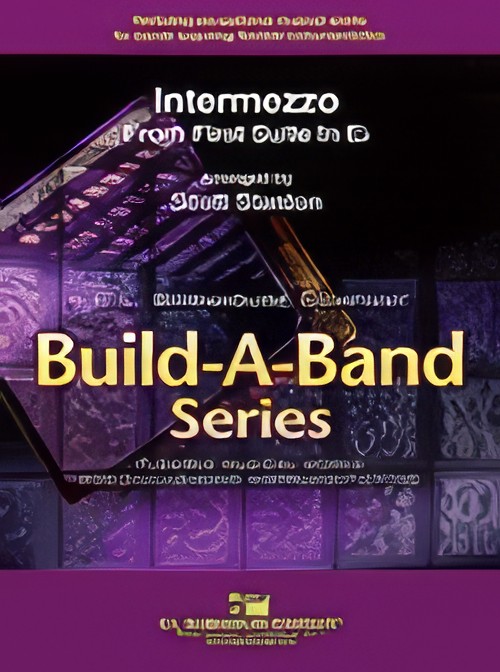 £60.00
£60.00Intermezzo (from First Suite in Eb) (Flexible Ensemble - Score and Parts) - Holst, Gustav - Stanton, Scott
Gustav Holst's "First Suite in Eb For Military Band" is universally considered a band masterwork. This "Build-A-Band" edition places it within reach of those bands with severely limited or awkward instrumentation, making it the perfect selection for your small band with good players to sound great! This fast middle movement from the suite teaches young musicians to articulate contrasting staccato and legato passages. Optional parts for guitar, piano, bass and percussion can fill some missing holes in the band. Duration: 3.00
Estimated dispatch 7-14 working days
-
 £174.99
£174.99Fiori (Flute Solo with Concert Band - Score and Parts) - Doss, Thomas
Fiori finds its genesis in a walk through an impressionistic garden. It expresses not only the atmosphere and mood but also tiny and grotesque scenes between the insects. The flute, as a solo instrument, plays a perfect role in this marvellous micro world. It was a challenge for the composer to integrate the sound of the flute through the "fragrance of flowers and exotic plants that fills the air".Duration: 11.45
Estimated dispatch 7-14 working days
-
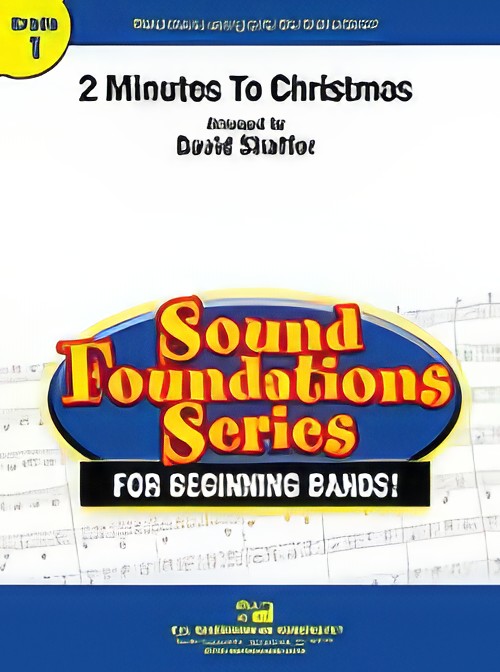 £45.00
£45.002 Minutes to Christmas (Concert Band - Score and Parts) - Shaffer, David
Opening with a percussive fanfare, this cleverly crafted medley includes "Ding Dong Merrily on High," "Pat a Pan," and "Jingle Bells" (what holiday arrangement would be complete without it?). Lots of sectional soli moments encourage independence of performance. Unique percussive sounds bring this arrangement alive with all of the sounds of the holiday season. And as the title implies, it can be played in exactly 2 minutes! Happy holidays! Duration: 2.00
Estimated dispatch 7-14 working days
-
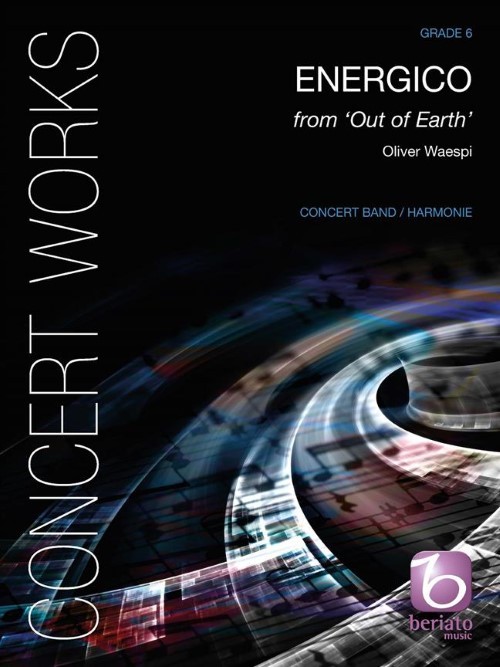 £239.99
£239.99Energico (Concert Band - Score and Parts) - Waespi, Oliver
Energico is the third movement from the composition Out of Earth, a musical exploration of the creation of the myth Ovid's Metamorphoses. This myth depicts humanity's path, and is taken from a golden age of the past. It describes the destruction of the Great Flood, to the re-building of life on earth. Out of Earth was created as a commission for the Aulos Concert Band and was premiered by the band in October 2015. It is a very challenging piece of music, which is perfect for contests or high-end concerts.Duration: 12.15
Estimated dispatch 7-14 working days
-
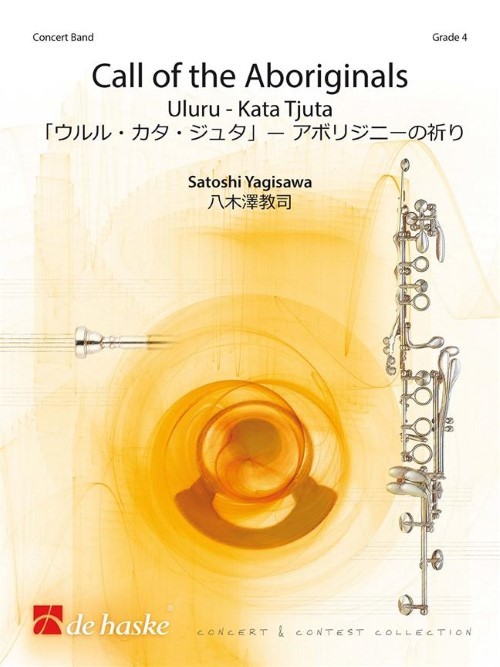 £137.99
£137.99Call of the Aboriginals (Concert Band - Score and Parts) - Yagisawa, Satoshi
Call of the Aboriginals - Uluru - Kata Tjuta was commissioned by Nara Municipal Ichijo Senior High School Symphonic Band, Nara City, Nara Prefecture, Japan, to commemorate their 60th anniversary. Uluru, also known as Ayers Rock, is an immense monolith rising in the vastness of the Australian outback. Famously also known as Ayers Rock, it is listed by UNESCO as a World Heritage Site. It is a sacred site for the Aboriginal people of the area, the Pitjantjatjara Anangu, but has also become a popular tourist destination, creating cultural and environmental conflicts. This work, which is written in a style typical of the composer, tells a dramatic tale adventure inspired by the life of the indigenous people and the magnificent scenery of Uluru. This work is suited for contests as well as thematic concerts. Duration: 7.45
Estimated dispatch 7-14 working days
-
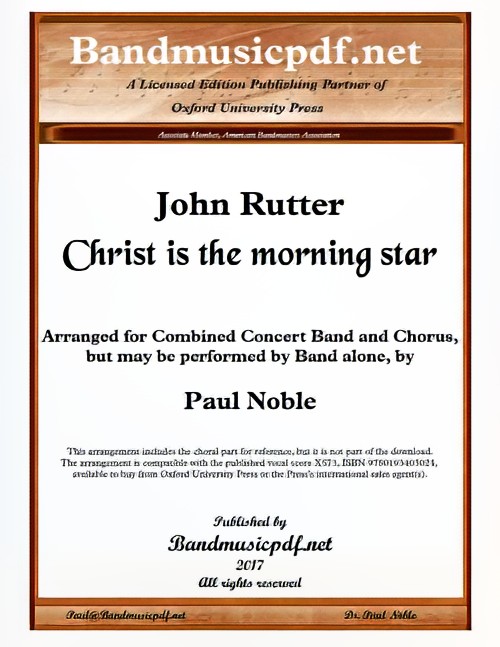 £75.00
£75.00Christ is the Morning Star (Concert Band with Optional Choir - Score and Parts) - Rutter, John - Noble, Paul
Christ is the morning star is sheer beauty in its simplicity and message. Whether performing this arrangement with or without a chorus, the beauty remains. The choral part is included in the score as reference, but is not included in the set. Choral parts may be purchased through Oxford University Press or their affiliates. The arrangement is written so that it is playable without a chorus. This piece brings John Rutter's music to everyone because it is technically not demanding. There are sufficient doubling of parts so that even the smallest ensemble can experience the music and bring its lovely essence to an appreciative audience.
Estimated dispatch 7-14 working days
-
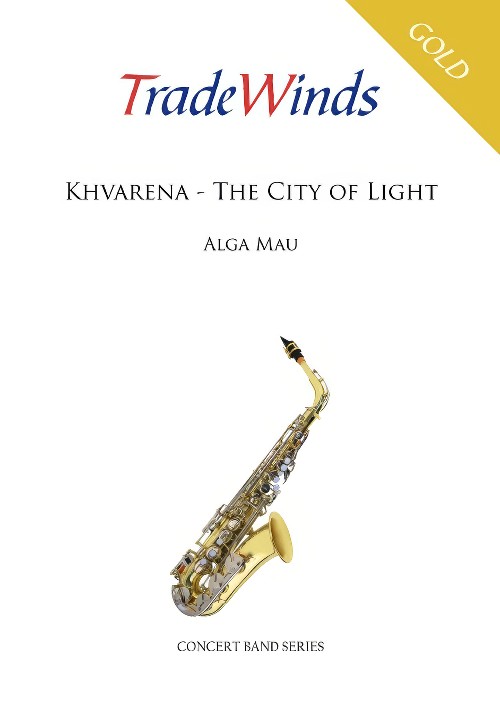 £44.95
£44.95Khvarena - The City of Light (Concert Band - Score and Parts) - Mau, Alga
Khvarenah: The city of light is Alga's second wind orchestra piece. Written in 2015 for a competition held by the Abingdon Concert Band in Oxfordshire, UK, it tries to capture the spirit of 'Khvarenah', an Avestan word for the Zoroastrian concept of 'royal glory' and 'splendour'. It opens with a quiet, steady layering of woodwind and brass, depicting an ancient desert city in the vast lands as the sun emerges from the horizon. We are then taken through the bazaars of the city as the markets are filled with joyful shouting and music and dance before entering the central courtyards, the royal army saluting their newly crowned king, heralding in a new era of glory.
Estimated dispatch 7-14 working days
